
|
 |
 |
 |
 |
 |
EGG‑NEWS.com
Egg Industry News, Comments & More by
Simon M.Shane
|
 |
 |
 |
 |
 |
 |
Egg Industry News
U.S Egg Industry-By the Numbers
|
12/22/2025 |
|
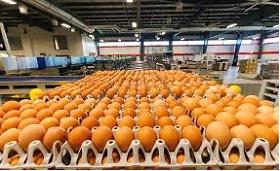
The following production data was summarized from the December 19th 20251 edition of the USDA Chickens and Eggs-:
- November 2025 pullet hatch attained 26.0 million, up 11 percent from November 2024.
- January to November 2025 cumulative pullet hatch was 317.7 million, up 7.9 percent from the corresponding months of 2025
- December 1st 2025 egg-type hatching eggs in incubators, 52.7 million, up 10 percent from December 1st 2024
- November 2025 pullets placed, 25.5 million, down 9.4 percent from November 2024.
- November 2025 pullets undergoing rearing, 143.3 million, up 11.0 percent from November 2024.
- November 1st 2025 hen population (in flocks over 30,000)2, 290.1 million, down 2.1 percent from November 1st 2024.
- November 2025 table eggs produced, 7,438 billion (619.8 million dozen), down 3.3 percent from November 2024.
- December 1st 2025 hens in molt, 2.2% of flock, up 15.8 percent from December 1st 2024.
- December 1st 2025 hens completed molt, 10.9% of flock, up 1.9 percent from December 1st 2024.
- November 2025 disposal by slaughter, 11.0 million, down 17.8 percent from November 2024
- November 2025 disposal by rendering, composting or death, 9.2 million, down 29.0 percent from November 2024.
 |
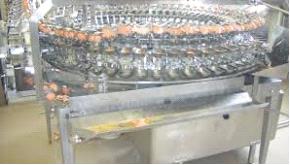 The take-away from data provided the inordinately delayed release is the steady replacement of the national flock that was reduced by depopulation of 39 million hens during the first five months of 2025. It is probable that the quantum of replacements will be inconsistent with demand, creating inevitable oversupply and depressed prices as recorded over 2016 and during early 2023. If mortality due to HPAI continues over the 5 million hens lost in September and October, coincident with the fall migration of waterfowl or if extension of infection from dairy herds occurs, the size of the national flock will be adversely impacted with implications for retail price. The take-away from data provided the inordinately delayed release is the steady replacement of the national flock that was reduced by depopulation of 39 million hens during the first five months of 2025. It is probable that the quantum of replacements will be inconsistent with demand, creating inevitable oversupply and depressed prices as recorded over 2016 and during early 2023. If mortality due to HPAI continues over the 5 million hens lost in September and October, coincident with the fall migration of waterfowl or if extension of infection from dairy herds occurs, the size of the national flock will be adversely impacted with implications for retail price.
- Previous release September 22nd before the federal shutdown
- The 30,000 cut-off has introduced a negative bias given the proliferation of 10,000 to 25,000 contract cage-free flocks

|
Evaluation of Transmissibility of SE
|
12/19/2025 |
|
Dr. Richard Gast of the USDA-ARS National Poultry Research Center recently presented data on experiments to ascertain the transmissibility of Salmonella Enteritidis (SE) in pullets reared as cage-free. Subjects, presumably specific pathogen-free and unvaccinated were infected with two strains of S. Enteritidis at a level of 7.8 x 107 CFU. Pullets were infected at either nine or fifteen weeks of age and sampled one to two weeks post inoculation and again at 21 weeks of age.

Rate of recovery of SE from organs in infected pullets at 21 weeks of age was higher in the group infected at 15 weeks compared to the nine-week treatment. The experimental design incorporated non-infected contact birds to determine rate of transmission under cage-free rearing. SE was recovered at a higher rate in contacts with pullets infected at 15 weeks compared to the nine-week treatment.
A second trial evaluated the rates of horizontal transmission according to the proportion of pullets infected with a range of 8 to 33 percent of a batch of 144 birds. It was determined that the rate of isolation of SE from organs of contact exposed birds at the age of transfer was proportional to the number of pullets infected. The proportion of pullets infected also influenced recovery of SE from the environment.
Sampling disclosed that a composite sample of litter was the most sensitive to detect Salmonella Enteritidis two weeks after infection. with consistent recovery from wall dust in the experimental rooms housing the infected and contact pullets. It is noteworthy that drag swabs from litter were the least sensitive among environmental samples.
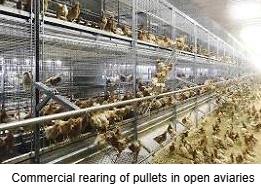
The two experiments would have been more relevant to commercial production had the infective dose been lower, corresponding to the possible level of infection under practical conditions. The second question relates to the protective effect of vaccination. Industry practice for over 20 years has included live attenuated mutant Salmonella Typhimurium vaccine administered orally at day-old or during the early brooding period followed by an inactivated SE oil emulsion vaccine at 12 to 14 weeks. Results relating to infection of organs, contamination of the flock environment and horizontal transmission may have been different from the data obtained in the USDA trial had the experimental design approximated commercial practice.
The results of this trial are essentially intuitive and confirm the ability of SE to spread among flocks with access to litter and to result in contamination of their environment. Investigating the transmission of SE among floor reared pullet is commendable but additional studies should be conducted reflecting current practice by determining the response to a range of infective doses with and without vaccination in a factorial design.
Given that drag swabs showed lower sensitivity of detection of SE compared to other environmental samples, this method of determining the SE status of a flock as mandated by FDA is questioned. Literature shows that swabs from fan blades, paralleling the high recovery rate from wall dust, would probably be more appropriate and certainly less trouble than for the FDA protocol.

|
California SE Outbreak
|
12/17/2025 |
|
 According to a California Department of Public Health release on Friday December 12th to date 63 confirmed cases of Salmonella Enteritidis (SE) have been diagnosed with 13 hospitalizations. Traceback has identified Vega Farms of Dixon, CA as the source. Cage-free brown eggs in 12 and 30 packs have been recalled. Affected product bears the plant number 2136 and Julian date 328. This would not appear to be a one-day event. Implicated eggs have been sold in a number of stores and delivered to area restaurants. According to a California Department of Public Health release on Friday December 12th to date 63 confirmed cases of Salmonella Enteritidis (SE) have been diagnosed with 13 hospitalizations. Traceback has identified Vega Farms of Dixon, CA as the source. Cage-free brown eggs in 12 and 30 packs have been recalled. Affected product bears the plant number 2136 and Julian date 328. This would not appear to be a one-day event. Implicated eggs have been sold in a number of stores and delivered to area restaurants.
A spokesperson for Vega Farms confirmed the 1,500-dozen egg recall and stated, “The contamination might have come from their processing equipment.” This is nonsense since supply flocks are responsible for introduction of infection that is both within and outside shells. Contaminated grading equipment could in theory disseminate infection but would be limited to the shell surface.

A further note of confusion was created by station KCRA, Channel 3 that quoted Jason Chapman General Manager at Taylor’s Market who stated that “The eggs didn’t smell right, and they didn’t cook right.” This suggests a quality or age problem. His statement “Working in the grocery business we recognize the signs of Salmonella” is misinformed nonsense. There are no detectable organoleptic changes in eggs contaminated with SE.
It would be interesting to learn the results of drag swab and environmental testing on all flocks supplying P2136, the Vega Farms SE vaccination program and the level of biosecurity applied. It is understood that California Department of Food and Agriculture has conducted appropriate sampling at the farm and plant. There may be a learning opportunity here.

|
Egg Exports from Brazil
|
12/17/2025 |
|
 According to the Brazil Association of Animal Protein Exporters (ABPA), during November the nation exported 1,900 metric tons of eggs representing 2.88 million dozen attaining a total value of $5.3million, with a unit value $1.85 per dozen. The quantity exported represented the output of a theoretical flock of 1.4 million hens at a constant 80 percent hen-day output. A total of 54 percent of November export volume was destined for Japan, (757 metric tons, up 270 percent YOY) and to Mexico (285 metric tons, up 51 percent YOY). According to the Brazil Association of Animal Protein Exporters (ABPA), during November the nation exported 1,900 metric tons of eggs representing 2.88 million dozen attaining a total value of $5.3million, with a unit value $1.85 per dozen. The quantity exported represented the output of a theoretical flock of 1.4 million hens at a constant 80 percent hen-day output. A total of 54 percent of November export volume was destined for Japan, (757 metric tons, up 270 percent YOY) and to Mexico (285 metric tons, up 51 percent YOY).
For the period January through November, 2025, Brazil exported 38,600 metric tons or 58.5 million dozen at an average unit price of $1.57 per dozen. Volume was up 135 percent over the corresponding 11-month period in 2024, and value was higher by 164 percent to $92.1 million. The 11-month export total corresponded to the output of a theoretical flock of 2.6 million hens.
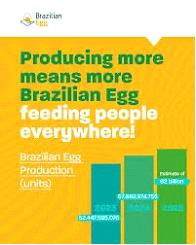 In 2024, Brazil produced 57 billion eggs or 4.8 billion dozen. This would correspond to a producing flock of 200 million hens. In 2024, Brazil produced 57 billion eggs or 4.8 billion dozen. This would correspond to a producing flock of 200 million hens.
In 2026 Brazil anticipates exporting 45,000 metric tons of shell eggs. Projections are for a 6.9 percent increase in domestic per capita consumption from 287 to 307 eggs, probably attributable the high cost of alternative animal protein. If valid the American Egg Board would be advised to determine how producers in Brazil managed to achieve a 6.9 percent increase in consumption over two consecutive years.
A second observation is that this report deals with exports from Brazil during November 2025. The latest figures available from the USDA on December 15th reflect August data. Other reports have been delayed due to the October federal shutdown and the subsequent difficulty in resuming regular releases of anticipated USDA statistics.

|
REVIEW OF NOVEMBER 2025 EGG PRODUCTION COSTS
|
12/15/2025 |
|
This update of U.S egg-production costs and available prices is provided for the information of producers and stakeholders. Statistical data was unavailable for October and November due to the Federal shutdown and has yet to be updated. December figures will hopefully be available for inclusion in the January edition. September values for production and November cost and price updates provided by the EIC are included in this review
NOVEMBER HIGHLIGHTS
- November 2025 USDA ex-farm blended USDA nest-run, benchmark price for conventional eggs from caged hens was 181 cents per dozen, up 64 cents per dozen or 54.7 percent from the October 2025 value of 117 cents per dozen. The corresponding November 2023 and 2024 values were respectively $1.63 and $3.64 cents per dozen. For annual comparison, average monthly USDA benchmark price over 2023 was 146 cents per dozen compared to 247 cents per dozen covering 2024. Stock levels and prices prior to the onset of flock depletions due to HPAI indicated a relative seasonal balance between supply and demand. Future nest-run and wholesale prices will be largely dependent on consumer demand for shell eggs and products, as determined by the economy, supply as influenced by flock placements, re-emergence of HPAI, net imports and the rate of replacement of pullets and hens depleted. Other considerations include diversion to shell sales from the egg-breaking sector in an interconnected industry. Imports of shell eggs continued during the past three months with the cumulative negative trade balance attaining 24.5 million dozen shell equivalents through August. During August the negative trade balance in shell eggs amounted to 4.0 million dozen. For 2025 through August, U.S. liquid and dried products combined achieved a positive trade balance of 5.6 million with August rising to 2.1 million dozen shell egg equivalents. (It is noted that Brazil released export data covering shell eggs in November during mid-December)
- November 2025 USDA ex-farm negotiated USDA nest-run, benchmark price for all categories of cage-free eggs was not released. The September 2025 value was147 cents per dozen. The corresponding November 2023 and 2024 values were respectively 123 and 455 cents per dozen.
- Fluctuation in wholesale price is attributed in part to the amplification of upward and downward swings associated with the commercial benchmark price-discovery system in use. An important factor influencing pricing is the proportion of shell eggs supplied under cost-plus contracts accentuating the upward and downward price trajectory of uncommitted eggs as determined by the price discovery system. Highly pathogenic avian influenza was the major driver of price in 2024 and through Q1 of 2025 due to the high incidence rate. Approximately 40 million hens and at least 2.0 million pullets were depleted in 2024 with close to an additional 36 million birds, (hens and pullets) in 35 complexes or farms through mid-May 2025. The Fall 2025 losses involved complexes of 3.1 million hens in late September and 2.0 million in early October. During November 570,000 hens producing table eggs were depopulated on 22 farms in close geographic proximity with flock losses averaging 24,000 per case suggesting contract producers of cage free eggs with common risk factors including feed supply and egg collection. This trend is a departure from losses involving a few very large complexes evident in the wave of cases during early fall.
- November 2025 USDA average nest-run production cost for conventional eggs from caged flocks over four regions (excluding SW and West), applying updated inputs was 75.7 cents per dozen, up 1.9 cents from October 2025 at 73.8 cents per dozen. The November average nest run production cost for other than caged and certified organic hens was estimated by the EIC to be 95.3 cents per dozen up 2.2 cents per dozen from October. Approximately 60 cents per dozen should be added to the USDA benchmark nest-run costs to cover processing, packing material and transport to establish a realistic cost value as delivered to warehouses.
- November 2025 USDA benchmark nest-run margin for conventional eggs attained a positive value of 105.3 cents per dozen compared to a positive margin of 43.2 cents per dozen in October 2025. Year to date the average monthly nest-run production margin has attained 255.9 cents per dozen. Average nest-run monthly margin for 2024 was 170.8 cents per dozen compared to 64.2 cents per dozen in 2023 and 155 cents in 2022.
- November 2025 USDA benchmark nest-run margin for all categories of cage-free eggs could not be ascertained due to non-release of USDA data. In October margin attained a positive value of 40.9 cents per dozen compared to a positive margin of 53.1 cents per dozen in September 2025. Through October the average monthly nest-run production margin attained 321.1 cents per dozen. Average nest-run monthly margin over 2024 was 440 cents per dozen compared with 100 cents per dozen in 2023, relatively unaffected by HPAI compared to the preceding and following years.
Since data for October and November production and September exports was unavailable as of mid-December values for the most recent reported month of August are retained in the following paragraphs.
- The August 2025 national flock (over 30,000 hens per farm) was stated by the USDA to be up by 6.6 million hens (rounded, and a probable undercount) to 285.9 million compared to approximately 326 million before the advent of the H5N1 epornitic of HPAI in 2022. Approximately 3.5 million hens returned to production from molt during the month together with projected maturation of 23 million pullets, with the total offset by depletion of an unknown number of spent hens. On October 8th USDA estimated the total U.S table-egg production flock at 304.5 million with 298.1 million actually in production.
- August 2025 pullet chick hatch of 28.7 million was down 0.4 million (-1.4 percent) from July 2025 but inconsistent with an increased industry need to replace depopulated flocks.
- August September export data will be released after resumption of Federal activities. In July 2025 exports of shell eggs and products combined were up 27.1 percent from June 2025 to 376,600 case equivalents representing the theoretical production of 5.6 million hens. Shell egg exports totaling 72,000 cases were dominated by Canada (38 percent of volume) the “Rest of Americas” including the Caribbean (40 percent). With respect to 304,000 case equivalents of egg products, importers comprised Canada (32 percent of volume), “Rest of Americas and the EU (each 20 percent), Japan, (12 percent), Mexico, (8 percent) collectively representing 98 percent of shipments. Volumes exported are based on the needs of importers, competing suppliers, availability in the U.S. and FOB prices offered.
- According to the USDA Egg Market Overview released on September 8th, all egg imports (shell, liquid and dry) in July attained 19.5 million dozen shell equivalents compared to exports of all categories of 11.2 million dozen shell equivalents.
- For 2025 through July the negative trade balance in all shell and derived egg products attained 15.5 million dozen shell equivalents.
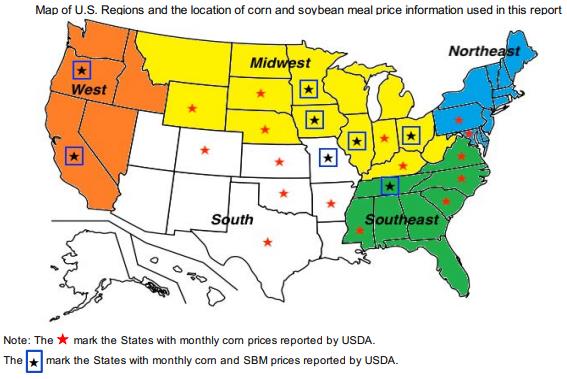 |
TABLES SHOWING KEY PARAMETERS FOR NOVEMBER 2025.
Summary tables for the latest USDA November 2025 costs and unit prices were made available by the EIC on December 9th 2025. Data is arranged, summarized, tabulated and compared with values from the previous November 7th 2025 release reflecting October 2025 costs and production data, as revised and applicable. Monthly comparisons of production data and costs are based on revised USDA and EIC values.
VOLUMES OF PRODUCTION REFLECTING THE ENTIRE INDUSTRY
|
PARAMETER
|
SEPTEMBER 2025
|
NOVEMBER 2025*
|
|
Table-strain eggs in incubators
|
55.0 million (Sept.)
|
million (Nov.)
|
|
Pullet chicks hatched
|
28.7 million (Aug.)
|
million (Oct)
|
|
Pullets to be housed 5 months after hatch
|
25.9 million (Feb. ‘26)
|
million (Mar ’26)
|
|
EIC 2025 December 1st U.S. total flock projection
|
316.7 million (Sept.)
|
million (Oct.)
|
|
National Flock in farms over 30,000
|
285.9 million (Aug.)
|
million (Sept.)
|
|
National egg-producing flock
|
299.0 million (Aug.)
|
308.7 million (Dec)1
|
|
Cage-free flock excluding organic
Cage-free organic flock
|
116.6 million (Sept.)
20.0 million (Sept.)
|
million (Nov.)
million (Nov.)
|
|
Proportion of flocks in molt or post-molt
|
11.9% (Sept)
|
% (Nov.)
|
|
Total of hens in National flock, 1st cycle (estimate)
|
253.4 million (Aug.)
|
million (Nov.)
|
*USDA data unavailable
- From USDA Weekly Shell-egg Demand Indicator December 10th
|
Total U.S. Eggs produced (billion)
|
7.59 August 2025
|
NOVEMBER 2025
|
|
Total Cage-Free hens in production
Proportion of organic population
|
136.6 million (Sept.)
14.6% Organic
|
million (Nov.)
% Organic
|
|
“Top-5” States hen population (USDA)1
|
141.8 million (Aug.)
|
million (Nov.)
|
*Revised USDA/EIC Note 1. Texas excluded to maintain confidentiality
PROPORTION OF U.S. TOTAL HENS BY STATE, 2025
Based on a nominal denominator of 285 million hens in flocks over 30,000 covering 95 percent of the U.S complement.
USDA has amended inclusion of specific states in regions and eliminated Texas data to protect confidentiality of Company flock
Sizes
|
STATE
|
AUGUST1
2025
|
November
2025
|
|
Iowa
|
15.3%
|
%
|
|
Indiana
|
12.2%
|
%
|
|
Ohio
|
12.5%
|
%
|
|
Pennsylvania
|
8.0%
|
%
|
|
Texas (estimate)
|
8.3% ?
|
%?
|
|
California
|
1.7%
|
%
|
- Values rounded to 0.1%
Rate of Lay, weighted hen-month (USDA) 81.5 September 2025. % November 2025
*Revised USDA
|
Revised per capita
|
Egg consumption 2020
|
285.6 (down 7.8 eggs from 2019)
|
|
Revised per capita
|
Egg consumption 2021
|
282.5 (down 3.1 eggs from 2020)
|
|
Actual per capita
|
Egg consumption 2022
|
280.5 (down 2.0 eggs from 2021 due to HPAI)
|
|
Actual per capita
|
Egg consumption 2023
|
278.0 (down 2.5 eggs from 2022)
|
|
Actual per capita
Forecast per capita
Projection per capita
|
Egg consumption 2024
Egg consumption 2025
Egg consumption 2026
|
270.6 (down 7.2 eggs from 2023) attributed to HPAI losses*
261.0 (down 9.6 eggs from 2024) forecast adjusted for HPAI losses , was 258.2 last month but this was aspirational
276.4 (up 18.4 eggs from 2025 assuming restoration of flocks and without HPAI losses)
|
*Revised, using data from USDA Livestock, Dairy and Poultry Outlook September 18th 2025 taking into account demand from the food service sector and presumably including the effect of HPAI depopulation and net importation.
EGG INVENTORIES AT BEGINNING OF SEPTEMBER 2025:
|
Shell Eggs
|
1.59 million cases in December down 6.4 percent from September 20251
|
|
Frozen Egg
Products
|
514,960 case equivalents, up 28.0 percent from August 2025
|
|
Dried Egg
Products
|
Not disclosed since March 2020 following market disruption due
To COVID. Moderate levels of inventory are assumed.
|
- USDA Weekly Shell Egg Inventory Report December 15th.
EGGS BROKEN UNDER FSIS INSPECTION (MILLION CASES) AUGUST 2025, 7.03 November 2025,
|
Cumulative eggs broken under FSIS inspection 2024 (million cases)
|
77.2
|
JAN. TO DEC.
|
|
Cumulative 2024: number of cases produced (million)
|
257.9
|
JAN. TO DEC.
|
|
Cumulative 2024: proportion of total eggs broken
|
29.9%
|
(30.8% 2022)
|
| |
|
|
|
Cumulative eggs broken under FSIS inspection 2025 (million cases)
|
52.3
|
JAN.-AUG.
|
|
Cumulative 2025: number of cases produced (million)
|
161.6
|
JAN.-AUG.
|
|
Cumulative 2025: proportion of total eggs broken
|
32.3%
|
JAN.-AUG.
|
Export and import data for August was not released due to Federal shutdown.
EXPORTS JULY 2025: (Expressed as shell-equivalent cases of 360 eggs).
|
Parameter
|
Quantity Exported
|
|
Exports:
|
2025
|
|
Shell Eggs (thousand cases)
|
JUNE 148. JULY 72
|
|
Products (thousand case equivalents)
|
JUNE. 148. JULY. 304
|
|
TOTAL (thousand case equivalents)*
|
JUNE. 296. JULY 376
|
*Representing 1.8 percent of National production in JULY 2025 (0.4% shell, 1.4% products).
COSTS AND UNIT REVENUE VALUES1 FOR CONVENTIONAL EGGS FROM CAGED HENS
|
Parameter
|
NOVEMBER 2025
|
OCTOBER 2025
|
|
4-Region Cost of Production ex farm (1st Cycle)1
|
75.7 c/doz
|
73.8 c/doz
|
|
Low
|
73.7c/doz (MW)
|
71.9 c/doz (MW)
|
|
High
|
77.7 c/doz (NE)
|
75.6c/doz (NE)
|
Notes: 1. Excludes SW and West representing an important deficiency
Components of Production cost per dozen:-
| |
NOVEMBER 2025
|
OCTOBER 2025
|
|
Feed
|
35.0 c/doz
|
33.3c/doz
|
|
Pullet depreciation
|
12.0 c/doz
|
11.8c/doz
|
|
Labor (estimate) plus
|
|
|
|
Housing (estimate) plus
|
28.7c/doz
|
28.7c/doz
|
|
Miscellaneous and other (adjusted May 2023)
|
|
|
Ex Farm Margin (rounded to nearest cent) according to USDA values reflecting November2025:-
181.0 cents per dozen1- 75.7 cents per dozen =105.3 cents per dozen (October 2025 comparison: 117.0 cents per dozen – 73.8 cents per dozen = 43.2 cents per dozen.
Note 1: USDA Blended nest-run egg price
| |
|
NOVEMBER 2025
|
OCTOBER 2025
|
|
USDA
|
Ex-farm Price (Large, White)
|
181.0 c/doz (Nov.)
|
117.0c/doz (Oct.)
|
| |
Warehouse/Dist. Center
|
236.0 c/doz (Nov.)
|
160.0c/doz (Oct.)
|
| |
Store delivered (estimate)
|
242.0 c/doz (Nov.)
|
166.0 c/doz (Oct.)
|
| |
Dept. Commerce Retail1 National
|
349.0 c/doz (Nov.)
|
349.0 c/doz (Oct.)
|
| |
Dept. Commerce Retail1 Midwest
|
363.0 c/doz (Nov.)
|
333.0 c/doz (Oct.)
|
- Unrealistic USDA values based on advertised promotional prices with few participating stores, non-representative of shelf prices!
| |
NOVEMBER 2025
|
OCTOBER 2025
|
|
U.S. Av Feed Cost per ton
|
$226.50
|
$215.59
|
|
Low Cost – Midwest
|
$205.31
|
$195.34
|
|
High Cost – West
|
$265.32
|
$253.05
|
|
Differential
Corn/ton 5 regions
Soybean meal/ton 5 regions
|
$ 60.01
$170.70
$341.51
|
$ 57.71
$165.52
$308.90
|
|
Pullet Cost 19 Weeks
|
$4.66 NOVEMBER 2025
|
$4.58 OCTOBER 2025
|
|
Pullet Cost 16 Weeks
|
$4.10 NOVEMBER 2025
|
$4.04 OCTOBER 2025
|
AVERAGE COSTS AND UNIT REVENUE FOR EGGS FROM CAGE-FREE HENS
|
Parameter
|
NOVEMBER 2025
|
OCTOBER 2025
|
|
5-Region Cost of Production ex farm (1st Cycle)
|
95.3 c/doz
|
93.1 c/doz
|
|
Low
|
91.1c/doz (MW)
|
89.1 c/doz (MW)
|
|
High
|
103.1 c/doz (West)
|
100.6 c/doz (West)
|
Components of Production cost for cage-free eggs, per dozen:-
| |
NOVEMBER 2025
|
OCTOBER 2025
|
|
Feed (non-organic)
|
40.5 c/doz
|
38.6 c/doz
|
|
Pullet depreciation
|
15.8 c/doz
|
15.6 c/doz
|
|
Labor (estimate) plus
|
|
|
|
Housing (estimate) plus
|
39.0c/doz
|
38.9 c/doz
|
|
Miscellaneous and other
|
|
|
Ex Farm Margin (rounded to cent) according to USDA values reflecting negotiated price for OCTOBER 2025:- (November not disclosed)
Cage-Free brown 134.0 cents per dozen1- 93.1 cents per dozen = 40.9 cents per dozen
September 2025:- 147.0 cents per dozen - 93.9 cents per dozen = 53.1 cents per dozen
| |
|
NOVEMBER 2025
|
OCTOBER 2025
|
|
USDA
|
USDA Average Ex-farm Price1
Gradable nest run2
|
173 c/doz (Nov.)
c/doz. (Nov.)
|
173 c/doz (Oct .)
c/doz. (Oct.)
|
| |
Warehouse/Dist. Center3
|
c/doz (Nov.)
|
c/doz (Oct.)
|
| |
Store delivered (estimate)
|
c/doz (Nov.)
|
c/doz (Oct.)
|
| |
Dept. Com. Retail4 C-F White
Dept. Com. Retail4 C-F Brown
|
562 c/doz (Nov.)
675 c/doz (Nov.)
|
c/doz (Oct.)
c/doz (Oct.)
|
| |
Dept. Com. Retail3 Organic
Dept. Com. Retail3 Pasture
|
568 c/doz (Nov.)
646 c/doz (Nov.)
|
570 c/doz (Oct.)
661 c/doz. (Oct.)
|
Contract price, nest-run loose. Range 155 to 210 c/doz. Negligible change since July 2024 and totally unrealistic.- Negotiated price, loose. Range $1.20 to $2.60 per dozen
- Estimate based on prevailing costs
- Unrealistic USDA values based on promotional prices with few participating stores and non-representative of shelf prices
Cage-Free HPAI losses unknown during November
|
Cage-Free* Pullet Cost 19 Weeks
|
$5.66 NOVEMBER 2025
|
$5.57 OCTOBER 2025
|
|
Cage-Free* Pullet Cost 16 Weeks
|
$4.95 NOVEMBER 2025
|
$4.89 OCTOBER 2025
|
* Conventional (non-organic) feed
Feed prices used are the average national and regional values for caged flocks. Excludes organic feeds with prices substantially higher than conventional.

|
DXE Activist Found Guilty
|
12/11/2025 |
|
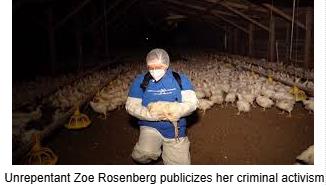
Zoe Roseberg a principal figure in Direct Action Everywhere (DXE) ‘Welfare Theater’ was found guilty of a number of charges including trespass, theft and conspiracy following an intrusion into the Perdue Farms plant in Petaluma, CA.
The jury rejected claims of rescue and welfare and recognized the actions of Rosenberg as trespass and theft. In past years, DXE activists have broken into numerous California poultry facilities at night committing various misdemeanors and felonies. It is possible that illegal entry to California farms may have introduced infection or predisposed flocks to pathogens. In the current episode Rosenberg and co-activists posed as plant employees and stole live broilers.

There is no evident morality in stealing poultry from farms in the guise of “rescue”. The action of DXE members is intended to generate publicity for their cause and to satisfy an innate compulsion to oppose intensive livestock production.
Advocacy and demonstrations are permissible. Extreme zealotry resulting in criminal action cannot be condomed. Members of DXE are entitled to their beliefs and can express their views but only within the law. Once they cross the line they are no longer activists but criminals.

|
Big Dutchman Innovations at IPPE 2026
|
12/07/2025 |
|
In addition to a proven range of equipment encompassing housing, ventilation, sustainability, and productivity, Big Dutchman has introduced new products suitable for both brand-new facilities and retrofits. The following new products to be demonstrated at the 2026 IPPE will enhance efficiency, promote flock health, and contribute positively to the bottom line.
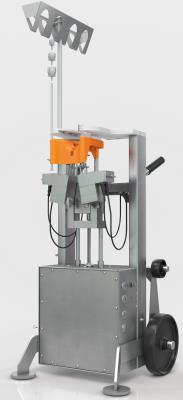 MultiVacc Pullet Vaccination Machine MultiVacc Pullet Vaccination Machine
To meet industry needs, Big Dutchman has developed a mobile semi-automatic vaccination machine. The unit can simultaneously administer four injections into the breast and a single wing-web injection in a single operation. Labor requirements are reduced, and vaccine positioning precision is improved compared with manual injection. This should improve immunity and flock productivity. The ergonomic design of the MultiVacc will reduce crew stress and minimize vaccination costs.
Click here for a video of the MultiVacc in action.
|
|
NXB ReMix Small Group Nest
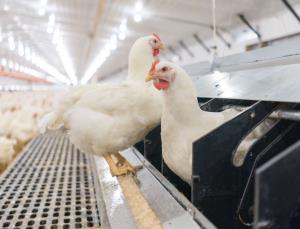 This unique hybrid design incorporates the advantages of individual nests with the efficiency of a community nest installation. The NXB ReMix was developed in consultation with the producer to be compatible with U.S. house layouts and modern high-producing hens. The system includes a nest pad with large perforations to help keep eggs cleaner. A dark, enclosed interior with an upgraded closure system will optimize egg production per hen. This unique hybrid design incorporates the advantages of individual nests with the efficiency of a community nest installation. The NXB ReMix was developed in consultation with the producer to be compatible with U.S. house layouts and modern high-producing hens. The system includes a nest pad with large perforations to help keep eggs cleaner. A dark, enclosed interior with an upgraded closure system will optimize egg production per hen.
|
 |
|
Sharky 430 Cleaning Robot
 Big Dutchman has developed an automated cleaning robot in conjunction with Envirologic of Sweden. The unit provides autonomous cleaning for both rearing and laying aviary installations. The Sharky 430 features a flexible cleaning arm for thorough decontamination of nests, troughs, and corners. The Sharky 430 can operate with sensors independent of guide rails, following pre-installed cleaning programs specific to Big Dutchman aviaries. The unit is powered by batteries, eliminating the need for an external power source and cables. The Sharky 430 offers the potential for thorough cleaning and disinfection and reduces labor requirements compared to conventional pressure washers. Big Dutchman has developed an automated cleaning robot in conjunction with Envirologic of Sweden. The unit provides autonomous cleaning for both rearing and laying aviary installations. The Sharky 430 features a flexible cleaning arm for thorough decontamination of nests, troughs, and corners. The Sharky 430 can operate with sensors independent of guide rails, following pre-installed cleaning programs specific to Big Dutchman aviaries. The unit is powered by batteries, eliminating the need for an external power source and cables. The Sharky 430 offers the potential for thorough cleaning and disinfection and reduces labor requirements compared to conventional pressure washers.
Click here for video of the Sharky 430 in action
|
|
CompoTower Manure Composting System
Big Dutchman’s CompoTower system is available in a range of capacities, handling the output from farms housing 10,000 to 250,000 hens. Four units can be clustered for U.S. in-line aviary complexes holding one million hens to process 100 tons of manure daily. Processing cycles range from 5 to 15 days, depending on moisture content, yielding a sterile, organic, nutrient-rich product with a moisture content of 15%. Predetermined quantities of manure are added to the insulated reaction vessel daily. Mixing blades agitate the product continually during composting. The insulated vessel is equipped with power ventilation, and the composting process is controlled by integrated circuitry on a control panel.
Big Dutchman has installed CompoTower units in the E.U. and Asian nations to comply with environmental regulations. The installation provides producers with an additional cash stream from the composted product. In areas with stringent restrictions on ammonia and greenhouse gas emissions, Big Dutchman can supply a two-stage air scrubber that removes 99% of ammonia and 90% of dust.
|

|
Brought to you by Big Dutchman
|
12/07/2025 |
|
This December pre-IPPE edition of EGG-NEWS is sponsored by Big Dutchman USA. In addition to industry news and available statistics and new products to be released at the IPPE are detailed. The commitment of the Company to innovation in design and construction of equipment will benefit the poultry industry through enhancing efficiency. Subscribers can access www.bigdutchman.com for additional information and specifications for the range of new products as featured. Innovations will be displayed on Booth B 37017

|
Cal-Maine Foods Commits Capital to Further Processed Egg Products
|
12/07/2025 |
|
 In a December 3rd announcement, Cal-Maine Foods Inc. (CALM) announced investment of $15 million in Echo Lake Foods. Capital assigned will allow installation of equipment for scrambled egg production, consolidating this process in an efficient plant with an output of 17 million pounds annually. Previously Cal-Maine Foods committed $15 million to a high-speed pancake line with an ultimate capacity of 12 million pounds. Joint venture Crepini Foods will receive $7 million through fiscal 2028 to add 18 million pounds to annual production over a two-year period. In a December 3rd announcement, Cal-Maine Foods Inc. (CALM) announced investment of $15 million in Echo Lake Foods. Capital assigned will allow installation of equipment for scrambled egg production, consolidating this process in an efficient plant with an output of 17 million pounds annually. Previously Cal-Maine Foods committed $15 million to a high-speed pancake line with an ultimate capacity of 12 million pounds. Joint venture Crepini Foods will receive $7 million through fiscal 2028 to add 18 million pounds to annual production over a two-year period.

The combined investment will increase production capacity of further-processed high-value egg products by 30 percent over the proximal two years. This is consistent with the dominant position of Cal-Maine Foods as the U.S. and the world’s largest producer of shell eggs.
 In announcing the expansion and the appointment of Jonathan Zoeller as CFO of Prepared Foods and the promotion of Dave Jordan to president of Echo Lake Foods, CEO Sherman Miller noted, “These prepared foods investments are a critical component of our multi-year plan to strengthen mid-cycle earnings, enhance portfolio resilience and capture accelerated demand for high-protein, ready-to-eat convenience formats.” Miller added, In announcing the expansion and the appointment of Jonathan Zoeller as CFO of Prepared Foods and the promotion of Dave Jordan to president of Echo Lake Foods, CEO Sherman Miller noted, “These prepared foods investments are a critical component of our multi-year plan to strengthen mid-cycle earnings, enhance portfolio resilience and capture accelerated demand for high-protein, ready-to-eat convenience formats.” Miller added,  “By investing in our facilities and building an exceptional leadership team we believe we can create a bigger, stronger, more capable prepared foods platform for the years ahead.” “By investing in our facilities and building an exceptional leadership team we believe we can create a bigger, stronger, more capable prepared foods platform for the years ahead.”

|
Vampire Bats Yield H5N1 Avian Influenza Virus in Peru
|
12/02/2025 |
|
A recent epidemiologic study demonstrated that vampire bats (Desmodus rotundus) can be infected with H5N1 avian influenza virus. The study conducted in Peru differentiated between two locations of bats reflecting coastal and inland communities. Bats preying on marine mammals and birds demonstrated antibodies to the virus only after the epidemic among marine mammals. There was little evidence of sustained transmission among bats in the implicated colony with only eight percent showing seroconversion. Inland bats that prey on livestock did not show antibodies to H5N1.

Bat species including flying foxes (Pteropus giganteus) acquired H5N1 in Bangladesh during 2023. In this report the frugivorous bats were in all probability infected by cohabitation with affected crows.

In laboratory investigations complementary to the field studies in Peru the research team at The University of Glasgow demonstrated that H5 antigen binds to respiratory tissue of vampire bats Bat-derived lung, liver and kidney cell preparations supported growth of avian and mammalian H5 clade 2.3.4.4b virus.
In commenting on the significance of the study on vampire bats Dr. Richard Webby, a prominent virologist affiliated to St. Jude Childrens’ Research hospital noted that the findings “were not something we should get too worried about”. He added “Anytime we find H5N1 in a different species or a different route of infection, that increases the pandemic risk”.
Tu, I-Ting. Spillover of H5 influenza virus to vampire bats at the marine-terrestrial interface. bioRXiv doi.org/10.1101/2025.11.09.686930

|
Initiation of HPAI Vaccination of Birds in Singapore Sanctuary
|
12/01/2025 |
|
 A Memorandum of Understanding has been entered into between Ceva Wildlife Research Fund, Ceva Animal Health and National Parks Board of Singapore and Mandai Wildlife Group. It is intended to vaccinate endangered species against highly pathogenic avian influenza (HPAI) given the worldwide prevalence of avian influenza and the vulnerability of the Mandai sanctuary. The pilot program will include immunization of the most vulnerable species including the white-backed vulture (Gyps africanus), the marbled teal (Marmaronetta angustirostris) and other raptors. The pilot project will provide details on the immunologic response of recipient birds and will also assist duration of immunity. A Memorandum of Understanding has been entered into between Ceva Wildlife Research Fund, Ceva Animal Health and National Parks Board of Singapore and Mandai Wildlife Group. It is intended to vaccinate endangered species against highly pathogenic avian influenza (HPAI) given the worldwide prevalence of avian influenza and the vulnerability of the Mandai sanctuary. The pilot program will include immunization of the most vulnerable species including the white-backed vulture (Gyps africanus), the marbled teal (Marmaronetta angustirostris) and other raptors. The pilot project will provide details on the immunologic response of recipient birds and will also assist duration of immunity.
 The program essentially follows the emergency vaccination of the highly endangered California condor (Gymnogyps californianus) in 2023 preserving this species highly susceptible to avian influenza as a result of consuming carcasses of dead birds. The program essentially follows the emergency vaccination of the highly endangered California condor (Gymnogyps californianus) in 2023 preserving this species highly susceptible to avian influenza as a result of consuming carcasses of dead birds.
The Ceva Wildlife Research Fund will spearhead the practical aspects of the program using CEVA vaccines with the Mandai wildlife Group monitoring the health of birds.
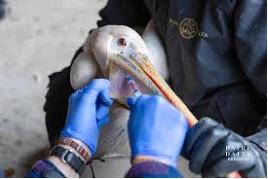 Marc Prikazsky chairman and CEO of CEVA Animal Health and also president of CEVA Wildlife Research Fund stated, “This collaboration truly reflects the essence of the One Health approach – bringing together scientific innovation, veterinary knowledge and a commitment to wildlife conservation. Marc Prikazsky chairman and CEO of CEVA Animal Health and also president of CEVA Wildlife Research Fund stated, “This collaboration truly reflects the essence of the One Health approach – bringing together scientific innovation, veterinary knowledge and a commitment to wildlife conservation.
The joint scientific and monitoring committee with representatives of the participants will ensure release of information and publication of data that will benefit poultry health professionals.

|
H5 Pandemic Warning from Pasteur Institute
|
12/01/2025 |
|

Dr. Marie-Anne Rameix-Welti, Medical Director of the Respiratory Infections Center at the Pasteur Institute recently expressed her concern over the possible emergence of H5N1 avian influenza as a pandemic virus. The Pasteur Institute was at the forefront of research on the virology and epidemiology of COVID-19 and is an established World Health Organization reference center for influenza.
It is emphasized that at this time H5N1 infection is mainly confined to wild bird and commercial poultry populations with spillover to marine and some terrestrial mammals. There is no evidence of widespread infection of humans and most importantly no record of human-to-human transmission. This property of the virus would be a prerequisite for emergence of an epidemic or pandemic strain. Despite extensive exposure of populations in close contact with poultry, there have been less than 1,000 confirmed outbreaks of H5N1 and other avian strains among humans over the past 20 years. Most cases occurred in Asia although with a high fatality rate especially among children and the elderly with intercurrent predisposing conditions.

Dr. Rameix-Welti noted that a “bird flu pandemic would probably be quite severe potentially even more disruptive than the pandemic (COVID-19) we experienced.” She noted that most world populations have antibodies to H1 and H3 seasonal influenza but lack protection against H5. Although there is concern over a potential H5 pandemic, officials at the World Organization for Animal Health consider the risk low but stress the need for preparation. This sentiment is endorsed by Dr. Rameix-Welti who pointed to an inventory of antivirals and extensive experience in containment gained during the COVID-19 pandemic.
Implicit in prevention of an outbreak is the need to suppress avian influenza in large commercial flocks. Intense biosecurity has not materially reduced the incidence of outbreaks but in the U.S. small commercial egg units in the Midwest are impacted in addition to turkey growing farms and in backyard flocks across all four migratory flyways.
Given the persistence of seasonal outbreaks, the susceptibility of commercial poultry, concentration in limited geographic areas there is ample opportunity for mutations to occur among circulating H5N1viruses. Both point mutations and recombinant events could result in an ability to infect humans and even to establish contagion. Vaccination of at-risk farms and species would reduce the probability of emergence of a zoonotic strain.
Preventive vaccination as employed in the E.U., Mexico and other nations in combination with biosecurity is currently opposed by a segment of the industry reliant on exports. Over the intermediate future, the possible loss of exports should be balanced against the consequences of the low probability of emergence of a zoonotic avian influenza strain although with a catastrophic outcome. Even over the short term, endemic avian influenza carries a high cost to the public and private sectors and above all as a result of an escalation in shelf prices of eggs and turkey products. This financial burden far outweighs the value of exported broiler leg quarters.

|
|
|
|
View More
|
Top
|
|